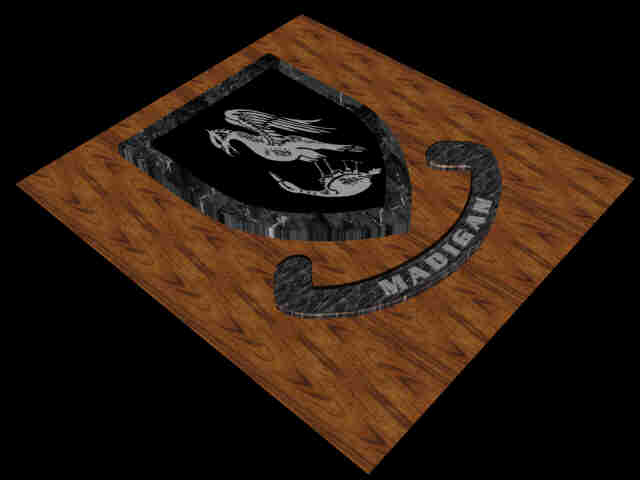Many 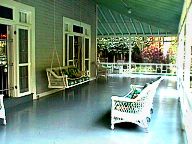 enjoyable
evenings were spent on the expanded verandahs discussing
inventions and the world in general. In this time period, yet
another famous American joined the group. Harvey Firestone became
friends with both, and soon the three were actively discussing
the economy of the nation. 1918 saw the end of the First World
War during which, knowledge that world economy could be
drastically interrupted had been driven home. This was of serious
concern for both Ford, who needed rubber tires, and Firestone who
produced them. There was no rubber to be had in the U.S. Edison
became fascinated by the challenge to produce rubber from
products available in the U.S. To this end he created the Edison
Botanic Research Corporation as an institute to find a suitable
replacement for the South American, and Asian product. Convinced
that rubber
enjoyable
evenings were spent on the expanded verandahs discussing
inventions and the world in general. In this time period, yet
another famous American joined the group. Harvey Firestone became
friends with both, and soon the three were actively discussing
the economy of the nation. 1918 saw the end of the First World
War during which, knowledge that world economy could be
drastically interrupted had been driven home. This was of serious
concern for both Ford, who needed rubber tires, and Firestone who
produced them. There was no rubber to be had in the U.S. Edison
became fascinated by the challenge to produce rubber from
products available in the U.S. To this end he created the Edison
Botanic Research Corporation as an institute to find a suitable
replacement for the South American, and Asian product. Convinced
that rubber 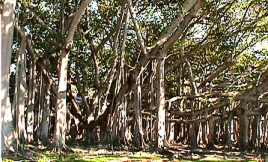 could be produced from other than rubber trees,
Edison began importing hundreds of trees which he systematically
planted around his winter home. Most of these trees are still
growing in their original locations. In 1925, Harvey Firestone,
looking for an unusual gift, gave Edison a Banyan Tree. This
spreading plant sends out streamers from its upper branches
which, when coming in contact with the ground form another tree
trunk. The tree still stands at the entrance to the Estate and
now covers some 400 feet in circumference. Edison would
eventually develop
could be produced from other than rubber trees,
Edison began importing hundreds of trees which he systematically
planted around his winter home. Most of these trees are still
growing in their original locations. In 1925, Harvey Firestone,
looking for an unusual gift, gave Edison a Banyan Tree. This
spreading plant sends out streamers from its upper branches
which, when coming in contact with the ground form another tree
trunk. The tree still stands at the entrance to the Estate and
now covers some 400 feet in circumference. Edison would
eventually develop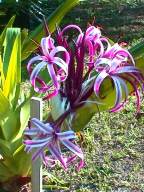 a rubber product from of all things, the
Goldenrod plant. By developing hybrids, he was able to produce a
plant that was over 12 feet high. Even so, technology had passed
him by. By the time he had perfected the process, a cheaper, more
efficient product had been created elsewhere and Edison's process
never saw production. In 1929, President-elect Hoover attended
Edison's birthday, along with his old friends, Harvey Firestone
and Henry Ford. It would be his last great meeting. Edison died
in October of 1931. His wife donated Seminole Lodge to the City
of Fort Myers. The city would later purchase the Ford home next
door, restoring both building to their original glory. The houses
and grounds are spectacular but access is restricted. Guide led
groups are taken along the paths to the various homes. Leaving
the path is not permitted even to get a close up picture of one
of the strange and beautiful trees or flowers. The houses are
closed to all. The wide verandahs are as close as you get.
Pictures are taken through
a rubber product from of all things, the
Goldenrod plant. By developing hybrids, he was able to produce a
plant that was over 12 feet high. Even so, technology had passed
him by. By the time he had perfected the process, a cheaper, more
efficient product had been created elsewhere and Edison's process
never saw production. In 1929, President-elect Hoover attended
Edison's birthday, along with his old friends, Harvey Firestone
and Henry Ford. It would be his last great meeting. Edison died
in October of 1931. His wife donated Seminole Lodge to the City
of Fort Myers. The city would later purchase the Ford home next
door, restoring both building to their original glory. The houses
and grounds are spectacular but access is restricted. Guide led
groups are taken along the paths to the various homes. Leaving
the path is not permitted even to get a close up picture of one
of the strange and beautiful trees or flowers. The houses are
closed to all. The wide verandahs are as close as you get.
Pictures are taken through 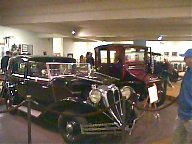 the outer windows. The guide was good, keeping
up a running commentary on life as it was for the Edisons and
Fords. The old cars are immaculately preserved. The only access
to a building came with the tour of the Edison's old laboratory
which contained many of the neat inventions credited to him. The
museum at the visitors center is, of course, open to all. Here we
found a docent in the portrayal of Harvey Freestone giving
instructions on how best to care for the tires on your
automobile. The Museum contained more memorabilia and lots of old
photographs of the men and the times. The attraction is great for
the common visitor, and promises to be quite frustrating to
horticulturists. The story line is a great one and of course a
wonderful piece of American history.
the outer windows. The guide was good, keeping
up a running commentary on life as it was for the Edisons and
Fords. The old cars are immaculately preserved. The only access
to a building came with the tour of the Edison's old laboratory
which contained many of the neat inventions credited to him. The
museum at the visitors center is, of course, open to all. Here we
found a docent in the portrayal of Harvey Freestone giving
instructions on how best to care for the tires on your
automobile. The Museum contained more memorabilia and lots of old
photographs of the men and the times. The attraction is great for
the common visitor, and promises to be quite frustrating to
horticulturists. The story line is a great one and of course a
wonderful piece of American history.
For more information
about this adventure check out
www.edison-ford-estate.com
*** THE END ***

